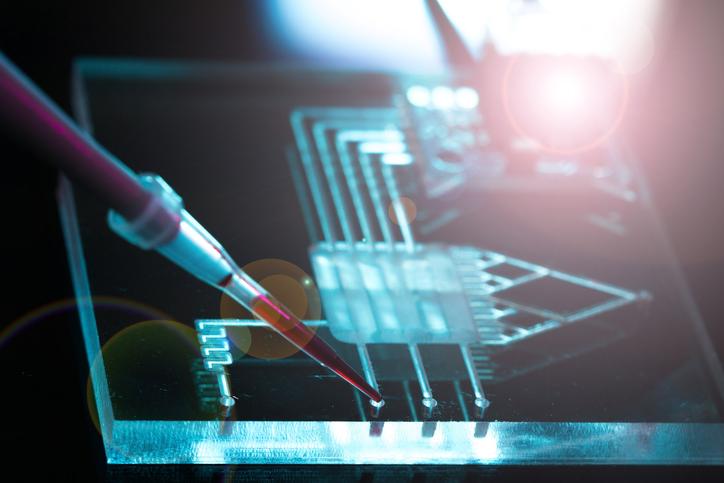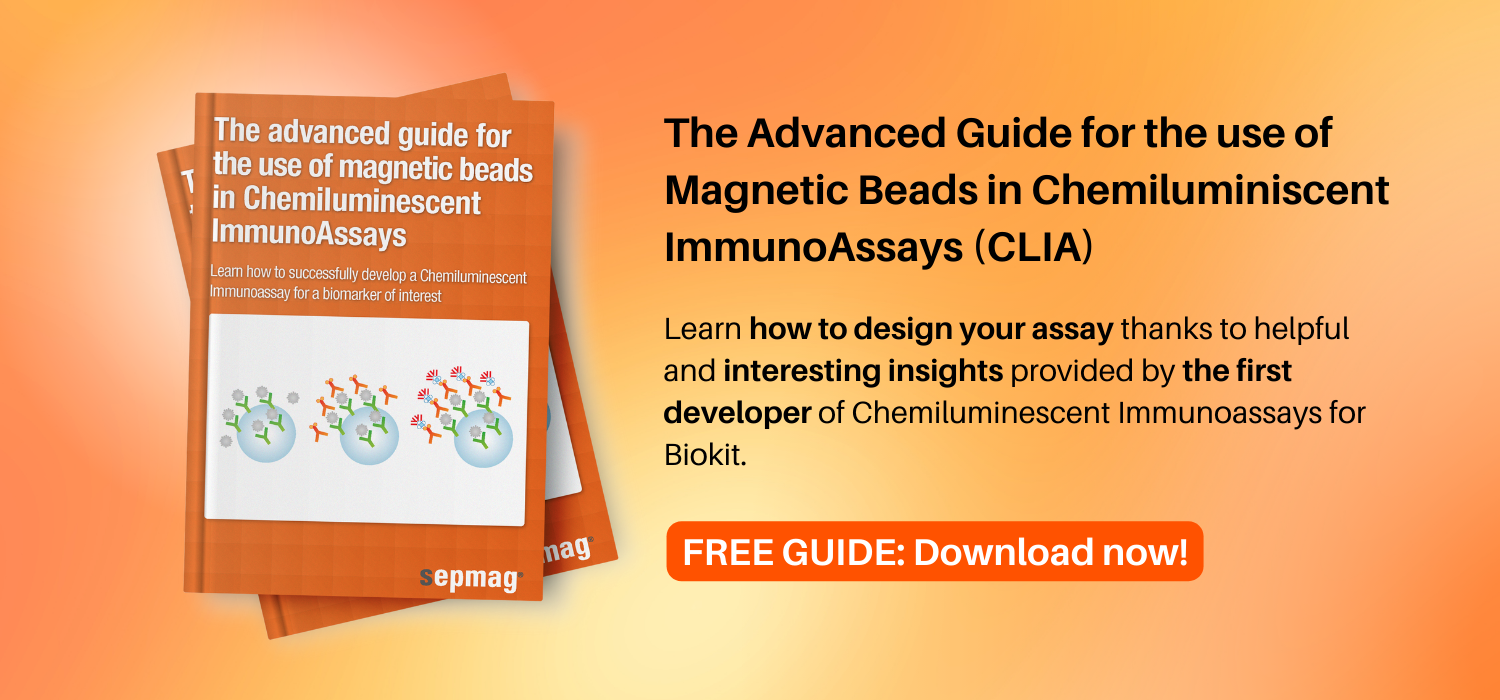Biodetection and biosensors are widely used for diagnosing disease or infection, point-of-care monitoring and treatment, detecting toxins, environmental monitoring, forensics and research. Biosensing technology has a crucial role to play in future biomedicine and healthcare. Biodetection is a broad term that encompasses the global strategies in place for the detection of biological threats such as pathogens, infectious diseases, and biological weapons. In particular, portable biosensing instruments such as lab-on-chip technologies are opening up new possibilities for biodetection systems identifying outbreaks of infectious pathogens.
How does biodetection of pathogens and infectious diseases work?
The most commonly used bioassay for the detection of pathogens is the Enzyme Linked Immunosorbent Assay (ELISA). ELISA is a technique used to detect antibodies or pathogens in a sample. An antibody ELISA detects the antibodies that are made in response to an infection, and therefore if that individual has been infected with a certain pathogen. An antigen ELISA can also detect if an individual is infected by detecting specific antigens on the cell surface of a pathogen.
An antigen can be a lipopolysaccharide on a bacterial cell wall, an endotoxin released by botulism, a glycoprotein on the surface of an Influenza or Ebola virus, or even an increase in circulating tumor cells with identifying surface proteins. These markers must be identified by the work of research scientists before they can be incorporated into bioassays. The ELISA is an example of a labeled assay, where a ‘tag’ is necessary for the identification and quantification of a target antigen. The earliest tags used in bioassays were radiometric, but these have largely been replaced by safer fluorescent, chemiluminescent, or colorimetric systems.
The use of assays for biodetection in clinical laboratories is a standardized and validated way to quickly and accurately detect pathogens and diagnose disease. Newer technologies that integrate biodetection platforms with silicon chips can offer better, more precise results in less time.
Label-free assays for biodetection and biosensing
The ELISA is the gold standard for clinical biodetection, but newer label-free assay methods are also available. Examples of label-free assays include Surface Plasmon Resonance (SPR), interferometric techniques, and photonic ring resonator waveguide platforms.
How do label-free biosensors work?
Label-free biodetection methods use optical biosensors to detect target molecules in real-time. They do this by measuring changes in the refractive indices of the materials on the biosensor surface.
All materials, including antibodies and antigens, have a property called a refractive index. This is a measure of the bending (refracting) of a ray of light when it encounters that material. When a specific molecule (commonly an antibody) is conjugated to the biosensor surface, the device can be calibrated to consider the antibody (or ligand) layer as a baseline condition. If the target molecule (or ‘analyte’, commonly an antigen) is present in a biological sample, it will bind to the ligand on the biosensor surface via non-covalent interactions.
The amount of analyte bound to the sensing surface is then quantified by measuring the change in refractive index of the surface as the analyte binds to the ligand. This can be measured as either a change in the angle of reflected light, or a change in absorbed wavelength, or as an increase or decrease in the intensity of light reflected off the biosensing surface.
What is label-free biosensing used for?
Label-free biosensing detects target molecules produced by biological or chemical reactions. The applications of this technology are very broad, and include affinity studies, COVID-19 research, bioprocessing, titer and impurity testing for developing biopharmaceuticals.
What are the benefits of label-free biosensing technology?
Label-free approaches to biodetection have a simpler workflow, are rapid, avoid labeling interference (which is possible when using labeled detection reagents), and are able to screen for analytes that are difficult to tag. This makes label-free assays ideal for point-of-use applications. As the methods for creating waveguides on silicon chips and coupling defined wavelengths of light through fiber optic cables improve, the cost of these bioassays will decrease steadily.
Since these devices are chip-based, they also offer a portable, real-time method for monitoring infectious diseases, environmental toxins, health conditions and more. For example, this technology has become a valuable predictive tool for cardiac disease in a clinical setting, where lab-on-chip label-free assays are being used to detect aggregated platelets in human blood.
Label-free biosensing approaches enable researchers to carry out analyses that are not possible using conventional biodetection methods that provide real-time, point-of-use results.





